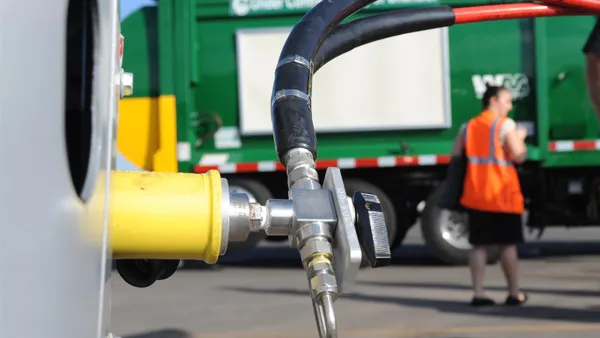Dive Brief:
- The Financial Oversight and Management Board for Puerto Rico announced Monday that it is considering a proposal from Energy Answers International, Inc. (EAI) to construct an 80 MW waste-to-energy facility with a daily capacity of around 2,300 tons in Arecibo. The project comes with an estimated cost of $860 million. The comment period ends Feb. 6.
- The board estimates the WTE project would create more than 7,000 direct, indirect and induced jobs during construction and 750 direct, indirect and induced full-time jobs. The site, estimated to take 42 months to complete, would be located less than half a mile from an interconnection point with Puerto Rico Electric Power Authority (PREPA).
- A former regional administrator for the U.S. Environmental Protection Agency (EPA), Judith Enck, told the Associated Press that officials had already rejected the proposed WTE site from EAI and accused the company of exploiting post-hurricane conditions to get approval. She told the AP the project "is not clean or renewable or a major source of electricity." EAI did not respond to a request for comment.
Dive Insight:
The Arecibo project would be the first new WTE project in the United States since a 96 MW facility opened in Palm Beach, FL in 2015. It would also be EAI's first notable foray into a U.S. project since a proposed facility in Baltimore was scrapped in 2016. That project was widely opposed and some activists were arrested while protesting the development. Puerto Rico's need for new energy infrastructure, however, could make WTE a more desirable utility option for the island than in Baltimore, where some are unhappy with an already-existing WTE facility.
Parts of Puerto Rico remain without power, months after Hurricane Maria hit, so projects and developments to restore and secure power to the island are likely a high priority. The WTE project is just one of four projects that have been proposed to help Puerto Rico strengthen its decades-old power grid. It's the only WTE project, however. The other energy generation proposal is a wind farm, while the other projects have to do with energy storage and energy efficiency.
If the WTE facility were built, it would be the first time in years that such a project was constructed in the United States. There are a handful of proposed WTE projects in the continental U.S. — whether they be expansion and refurbishment like in Connecticut, or new construction in upstate New York — though both projects are facing community resistance.
However, because of limited landfill space and high shipping costs, WTE may be seen as a more attractive option on islands. Covanta, for example, has mentioned island nations including Australia, the Philippines and the U.K. as areas of opportunity for WTE growth. In the U.S., a recent audit found the city of Honolulu could save millions of dollars by recycling less and sending more material to WTE. Puerto Rico could be in a similar situation, where existing landfills have many capacity and environmental challenges, and distance from other ports could make it more costly to export recyclables.









